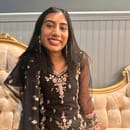Like most people in my generation, my tween years consisted of watching Nickelodeon and Disney Channel simultaneously. The shows that defined my awkward pre-teenager phase were Victorious, iCarly, Lab Rats, Wizards of Waverly Place, Zoey 101, and many more. When the documentary Quiet on Set aired on March 17, it revealed the dark truth behind these beloved childhood shows. For some, Quiet on Set only confirmed the toxic environment many known child stars grew up in while being on Nickelodeon while also delving further into Dan Schneider’s awful, predatory treatment toward his co-workers and actors.
While Quiet on Set revealed the exploitation of child actors faced in this industry, the dark side of this can be traced back way before the popularity of Nickelodeon and Disney. Shirley Temple is a famous child star known for her stardom during the 1920s. She first reached fame when she was only just a toddler and starred in a series of short films called Baby Burlesks in 1931. The series consisted of other toddler stars recreating satires of major Hollywood films and current events at the time. Casting a bunch of toddlers with seemingly no regulations on set is already weird enough, but the hyper-sexualized adult clothing and having them act out adult storylines makes you wonder what audiences they were trying to appeal to with these films. Even more tragic is the case of Brooke Shields who was only 10 when naked pictures of her on Playboy were allowed to be legally published.
Fast forward to today and while there are stricter laws and regulations regarding child actors, this does not save them from the horrors of the Internet. There have been countless cases of child stars experiencing harassment and over-sexualization from the Internet. In 2008, photographers were waiting on the pavement for Emma Watson to take pictures up her skirt on her 18th birthday. The entire cast of Stranger Things has faced over-sexualization from fans since they were 13 and 14, with Finn Wolfhard having spoken out about the inappropriate comments has been receiving since he was 14, one even being from a 27-year-old model. With the recent release of Netflix’s live adaptation of Avatar, Azula’s actress Elizabeth Yu has received multiple comments about her role as Azula that have been straight-up body-shaming. Hollywood’s history of sexualizing and exploiting child actors has run deep. It begs the question if children should even be in Hollywood in the first place.
The exploitation of children goes beyond Hollywood and can be found on countless social media platforms. The rise of “mommy vloggers” has introduced the conversation of whether there needs to be new laws protecting the children of these influencers. Children who cannot consent when their lives and faces are put on the Internet and easily accessed by predators. Jacquelyn is a notable mommy vlogger who has received rapid criticism for the content she puts out about her daughter. Viewers have pointed out the startling number of saves on each TikTok video that features her daughter, Wren. People have also pointed out that the content her mother records of Wren doesn’t seem particularly appropriate. There is a video on her TikTok account of Wren swallowing a piece of gum and saying off-camera to her mother, “I swallowed it. Is that okay?” that has 10,000 saves on it. The video would be completely innocent and not a cause for concern if there weren’t a startling number of saves on it and undeniable proof of inappropriate comments already appearing on videos with her child before. The appearance of children on the little or big screen sparks the question if there needs to be even more regulations and laws surrounding the issue, especially with the rise of mommy vloggers.


